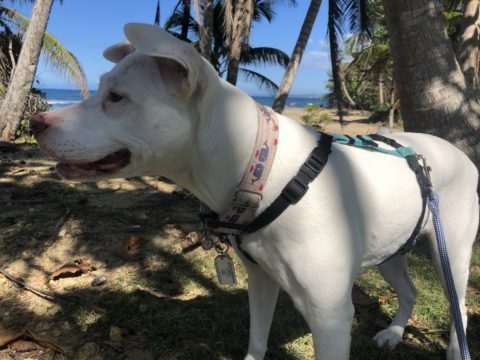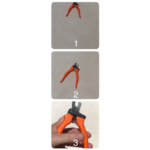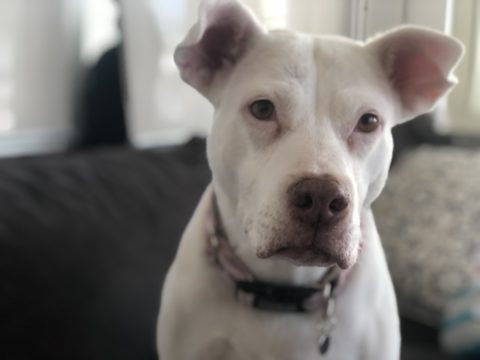My Deaf Dog Goes Crazy on Walks…Barking, Pulling, Jumping
 Does your deaf dog react to cars, bikes, scooters, other dogs, or people while out walking? Does your deaf dog bark hysterically, pull on the leash, or jump up on you in response to these things while outside? If these questions are something your dog struggles with, this post is for you!
Does your deaf dog react to cars, bikes, scooters, other dogs, or people while out walking? Does your deaf dog bark hysterically, pull on the leash, or jump up on you in response to these things while outside? If these questions are something your dog struggles with, this post is for you!
The answer is to use the tools of desensitization and counter conditioning to change your deaf dog’s conditioned emotional response (CER) –aka his reaction– to the situation.
DESENSITIZATION: What does it mean?

Desensitization is working at a pace that your dog is comfortable. How do you determine this pace? You will know that your dog is relaxed when he does not react inappropriately. If he responds by barking, lunging, or freezing this means that you are moving too fast, too close, or too soon. Your dog will provide feedback in the form of his body language. If his behaivor indicates stress you need to make it easier for him to be successfully calm.
What does it look like in action?
Let’s say when your dog sees other dogs he pulls on the leash, barks incessantly, or otherwise demonstrates behaivors which indicate anxiety. You want to begin at a distance where he does not react in this manner.
This might mean parking at the far end of the parking lot, remaining in the car, and watching and waiting for a dog to pass far away in the distance. If your dog responds with the unwanted behaviors you are too close and need to move further back.
When your dog can calmly look at the object of his anxiety—in this case a dog—and respond peacefully you will know you have begun at the right distance away.
COUNTER CONDITIONING: What does it mean?
Counter conditioning is pairing something that your deaf dog finds high value and worthwhile—like a yummy treat—with the potentially scary “trigger” object. The order is key when doing this. You want the scary “trigger” to predict the treat vs. the other way around. This point is an important one to make sure to grasp as you don’t want treats to begin to predict the scary trigger.
What does it look like in action?
To use our dog reactive example, while incorporating desensitization and starting at a distance that your dog can respond calmly and remain below threshold, pair the sight of another dog with a meatball.
In other words, your dog sees a dog without reacting and you immediately pop a meatball into his mouth. Over time your deaf dog will begin to associate the sight of another dog (or which ever other trigger we are talking about such as a car, bike, stroller, etc.) with good things occurring.
The next step is to cue or mark and reinforce an alternative behavior. This means that your dog sees the other dog and orients back to you. Often times the error that people make here is trying to ask for something too difficult. Skipping the first part above folks try to ask for a behavior like a “sit” and frequently cue the sit at a distance that is also too close. The dog can’t respond because he is already reacting to the trigger and many times people are at a loss as to how to handle the situation.
Instead, try an easier behavior such as your dog turning to focus on you. Mark and reinforce your dog turning back to you. This way the sight of another dog (or other trigger) becomes the cue for your dog to orient towards you. Now instead of barking, lunging, or pulling, your deaf dog will perform the incompatible behavior of focusing his attention on you instead. Be sure to you mark and reinforce this alternative behavior which you want to see more often.
To imagine what the whole scenario looks like, consider that you start off at the end of the parking lot (desensitization). Your deaf dog sees another dog and turns to you and you give your starfish hand flash (marker) and deliver a meatball (reinforcer). Viola! This new replacement reaction becomes more reinforcing and over time turns into your dog’s default response.

BEHAVIOR THAT IS REINFORCED IS REPEATED!
Eventually this new behavior will replace your deaf dog’s previous undesirable reaction. Think of every new chance to practice as an opportunity where you have the chance to get another rehearsal of the version of the behavior you want to see repeated. Keep in mind that patience and consistency will be the keys to turning this preferred reaction into your dog’s default behavior!
